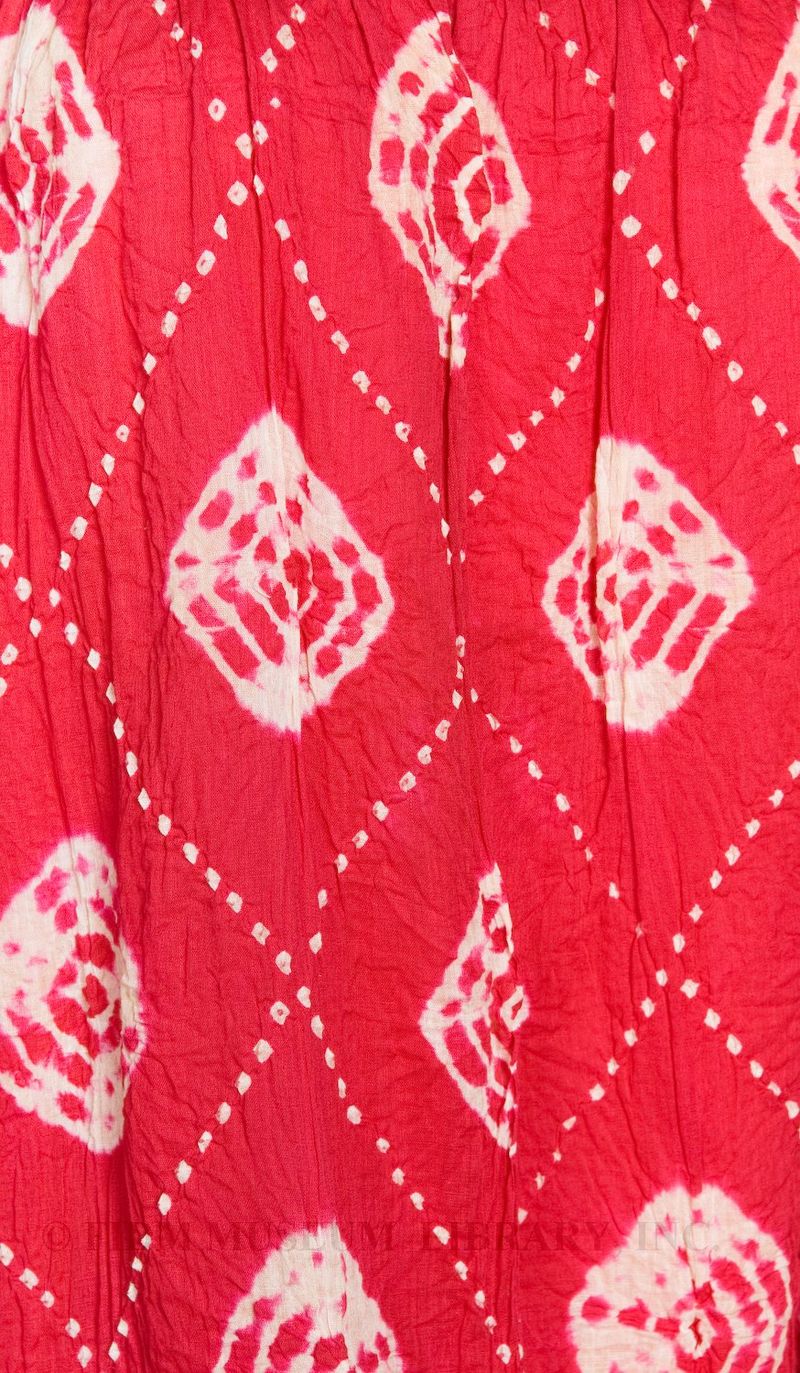Rudi Gernreich
1967-68
Bequest of the Rudi Gernreich Estate
G85.331.1
Rudi Gernreich is probably best known for his most provocative creations, such as the monokini or this military ensemble. Though Gernreich was definitely interested in pushing fashion boundaries, some of his more light-hearted designs indicate an interest in non-Western dress. A specific focus on Asia reveals itself in the kabuki, kimono and Japanese schoolgirl dresses, all of which are loosely abstracted versions of garments worn in Japan. Gernreich also produced collections based on Chinese opera costumes and traditional garments of Thailand.
In the late 1960s, Gernreich visited Asia. During his journey, Gernreich reportedly “saw sheer fabrics wrinkled and blistered by the ancient art of tie dyeing, traditional kimonos with flowing sleeves to cover the hands, Indian hangings quivering with small silken tassels.”1
The white tie dye pattern on this red mini dress probably resulted from textiles and garment seen on this journey. Though this tie dyed dress may have been inspired by Gernreich’s Asian vacation, tie dye had already become a widely known decorative technique due to its association with the hippie aesthetic.
Tie dying is a method of creating patterns through tightly binding or tying raised sections of cloth. The entire piece of cloth is then dyed, usually in a dipping process. When unbound, the tied areas will retain the original ground color of the cloth. Because the ties are very tightly bound, the tie dyed fabric usually has a distinct crinkly texture, considered part of the overall beauty of the finished product. Silk is particularly prone to retaining this texture.
Skilled practitioners can create extremely detailed and sophisticated abstract or figural patterns using this technique. Though tie dye techniques are used in many cultures, including South Asia and Africa, another common name for the process, shibori (Japanese for wringing or squeezing) indicates a strong association with Japan. Shibori often enriches kimonos and each pattern has a name derived from its appearance. The small spots seen on this Gernreich mini dress are called kanoko, or fawn-spotted after a perceived resemblance to the spotted fur of a young deer. The larger, circular motif is named spiderweb (kumo) as the segmented and irregular shape resembles that of a silken spider web.
1 Vecchio, Walter. The Fashion Makers: A Photographic Record New York: Crown Publishers, 1968: 66.




Beautiful! I loved seeing something a little different from Gernreich.
Hi Lizzie,
That’s one of the reasons I posted this garment! Though Rudi Gernreich designed a pretty wide variety of styles, he is very closely associated with the more minimalist work. It’s nice to see the breadth of his aesthetic.
I was fortunate enough to have a tour of some of the FIDM archives about 20 years ago and was delighted by many of Gernreich’s works – I since include much more Gernreich in my fashion history classes. I will be delighted to see more of your Gernreich collection online someday.